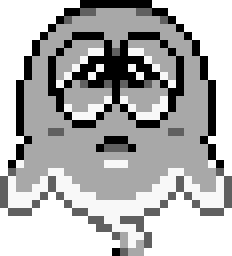Publisher: Jaleco
Release: 1991
Platform: Arcade, Game Boy (played)
Genre: Action
We’ve been playing “shapeshift” games for too long now to afford not labeling them the way we do with “metroidvanias”, for instance. From the visionary kick-off Rock Man (where equipping defeated bosses’ weapons changes not only the way the game plays but also the hero’s appearance), to the seminal Altered Beast (where shapeshifting is even mandatory for the game to progress), through Kirby’s embodiment of copycat abilities all the way down to Super Mario Odyssey video games had been messing around with that mechanic for the last 30+ years.
Of course, there are several forms of “evolving” or “upgrading” avatars out there; but games rarely put their balance at stakes by allowing the player to be virtually anything—chances are even slimmer if the change can be made on the fly and outside the borders of a linear skill tree of sorts. (Series like Pokémon or Shin Megami Tensei have a nice way to work around that by allowing you to gather/manage an army of diverse critters without necessarily changing the protagonist—or the main rules that go with it, for that matter—but that’s another story.)
Well, Avenging Spirit was one of the early examples in that particular kind of risk taking that managed not only to be primarily fun but also not game breaking.
 |
| Mafia goon, fire-spitting raptor, grenade-throwing Rambo, athletic kick-boxer; all at your disposal. |
In the role of a ghost trying to save his girl before the final departure, fun here is inherent to the gameplay premise: to possess enemies (bosses aside, understandably and unfortunately) and use their bodies until there’s no vital energy left in them—or until you stumble into a more interesting/powerful one and decide switching to it. Separate health bars (for both the ghost and the body) ensure you can take full advantage of any vial you decided to inhabit, but also keeps the player from breezing through the level in spectral form since staying like that causes the respective energy to drain out.
That feature alone helps with the balance issue up from foundation, but reinforcements come from an unexpected field too: level design. Strong enemies are either hidden or rare; environment hazards like lasers hurt strong and weak equally; and short-cutting through tricky zones as a ghost can be riskier than facing dangers on foot—it’s all up to who’s in command.
Eventually exploration rewards the player in more than one ways: the “good” ending can only be achieved if 3 keys scattered throughout the game are found—and they actually help overcoming the last fight in a morbid way (no spoilers).
Even if such ideas are still around us in several forms they didn’t evolved from a particularly clear lineage; obviously, that means we couldn’t get to call a game simply a “shapeshifter”. But it can be at least an interesting tag that ties quite a varied fauna together.
